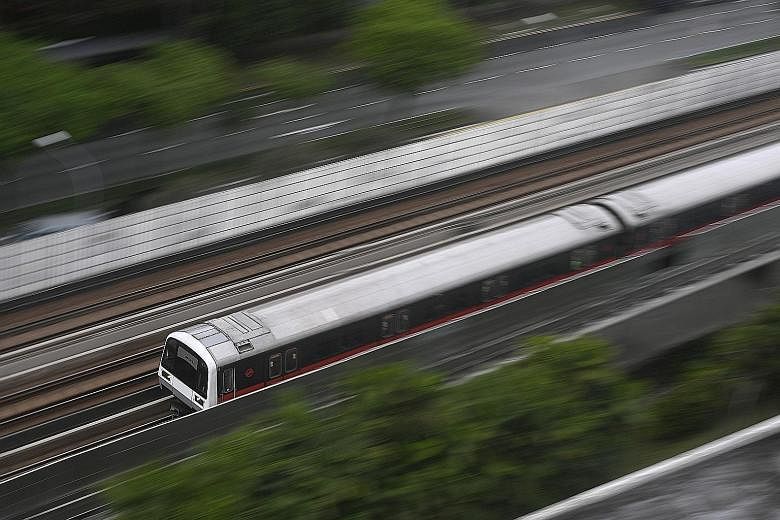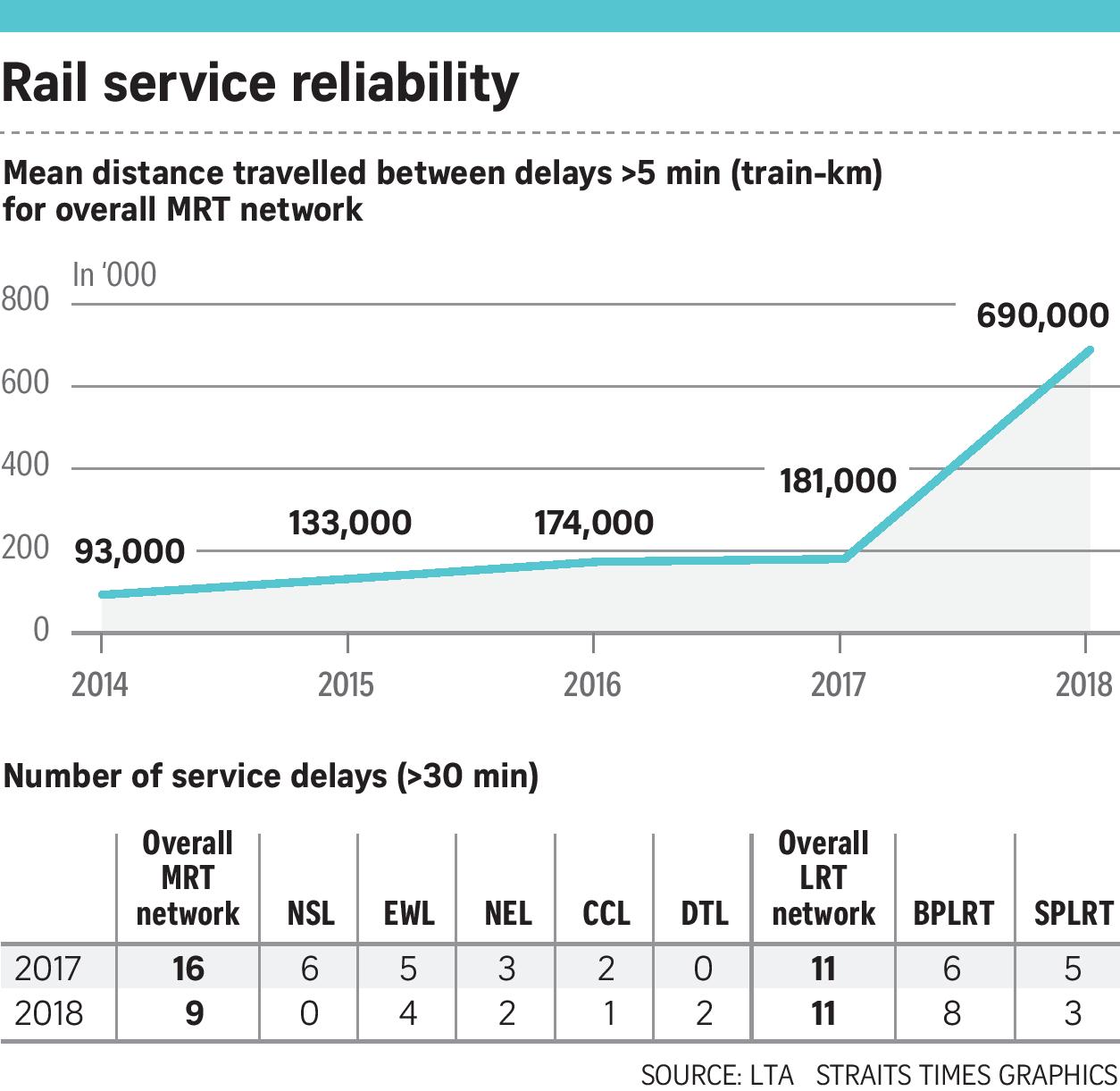The MRT network hit a new high in a measure of reliability last year, with trains clocking an average of 690,000km between delays - 3.8 times better than the year before.
The stark improvement was on the back of asset renewal programmes, additional train runs and completion of new lines.
The North East Line (NEL) was the star performer, chalking nearly 1.4 million train-km between delays of more than five minutes each, according to figures the Land Transport Authority released yesterday .
The new Downtown Line was next, with 928,000km, followed closely by the North-South Line with 894,000km and Circle Line with 728,000km.
The East-West Line - the last to have its resignalling upgrade done - clocked 408,000km between delays, but is expected to show continuous improvement. The oldest North-South Line posted the best improvement - jumping from 89,000km between delays in 2017 to 894,000km last year.
Meanwhile, there were nine major delays (over 30 minutes) on the network - down from 16 in 2017.
The LRT network on the whole showed an improvement too, with 82,000 car-km clocked between delays. The Sengkang and Punggol LRT rose from 115,000km to 216,000km, but the entire network was pulled down by weaker performance on the Bukit Panjang LRT. The latter hit 43,000km between delays - down from 53,000km.
Singapore University of Social Sciences transport economist Walter Theseira said: "With completion of resignalling and other needed works, we are now reaping the benefits of these investments.
"But I think we need to also pay attention to the human impact of these disruptions as an incident has very different implication depending on what time of day it occurs and how long."
The Nominated MP added: "So once we get to higher mean kilometres between failure (MKBF) reliability, I think it's time to develop more fine-grained measurements so we don't lose sight of what is important."
Other observers have also pointed out that train speeds have not reverted to pre-2011 levels, and overcrowdedness - especially during morning peaks - remains an issue with commuters.
Marketing and communications head Eugene Mok, 33, said: "There are fewer delays and breakdowns from 2017, but am not sure if it is now four times better... 2017, after all, was disastrous with all the delays caused by engineering works."
IT consultant Davis Li, 35, said he too feels there has been an improvement. "Even the East-West Line is smoother and the air-con is stronger now."
But Mr Li noted that journey time between Tampines and Jurong East - his daily commute - is still "five to 10 minutes longer" than stated.
At a recent signing ceremony for a mid-life upgrade of North East Line trains, Transport Minister Khaw Boon Wan said: "When I set this stretch target of one million train-km, it was not plucked from the sky. I took a look at how the other good MRT lines in other cities performed. To be able to achieve it consistently, very, very few metros have been able to do it and I thought in order to motivate our staff, I deliberately chose this very stretch target of one million MKBF.
"And now, to be able to see at least one of our lines, NEL, performing this achievement, I must commend Land Transport Authority, SBS Transit and the respective original equipment suppliers for this sterling performance."



